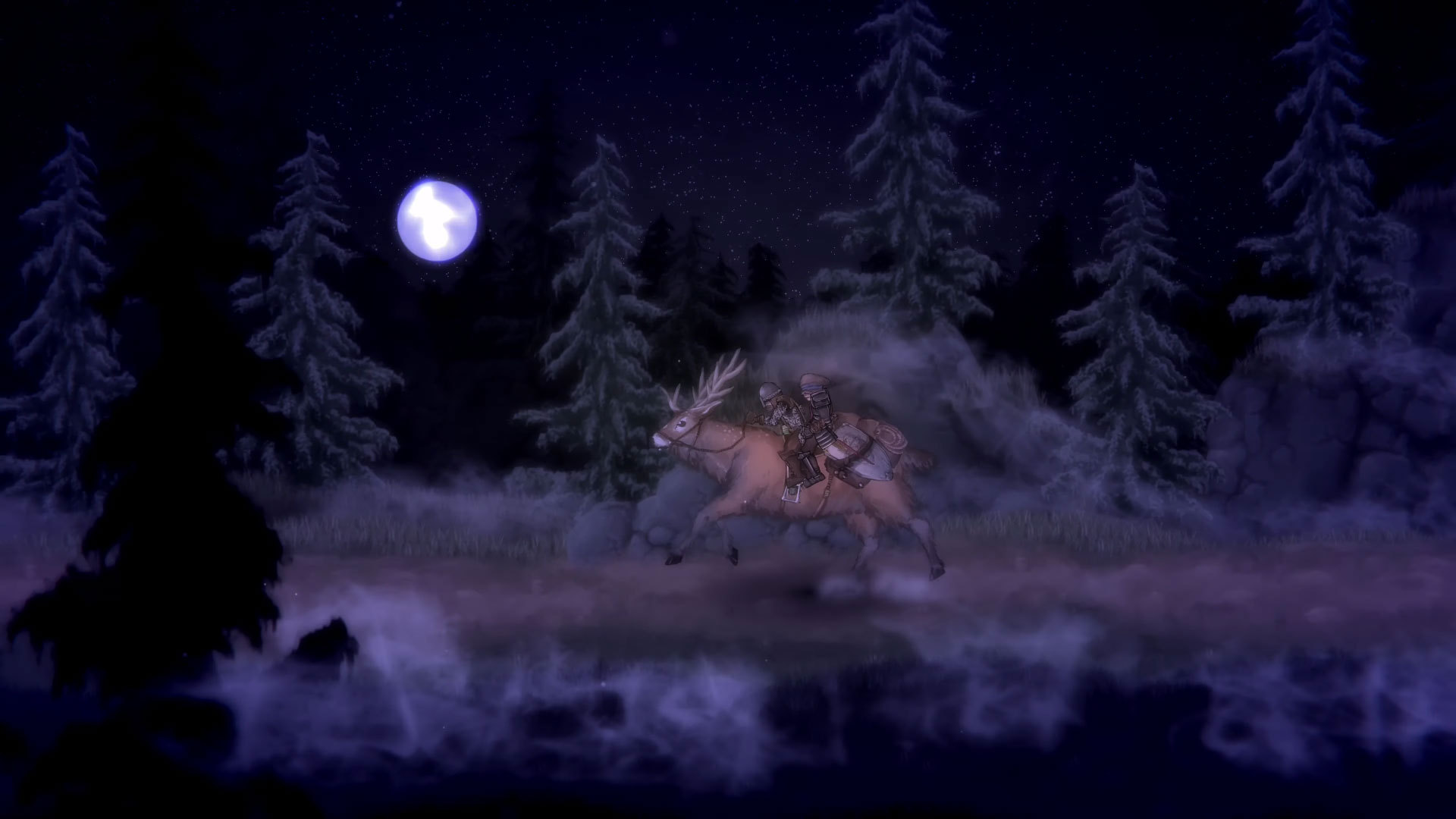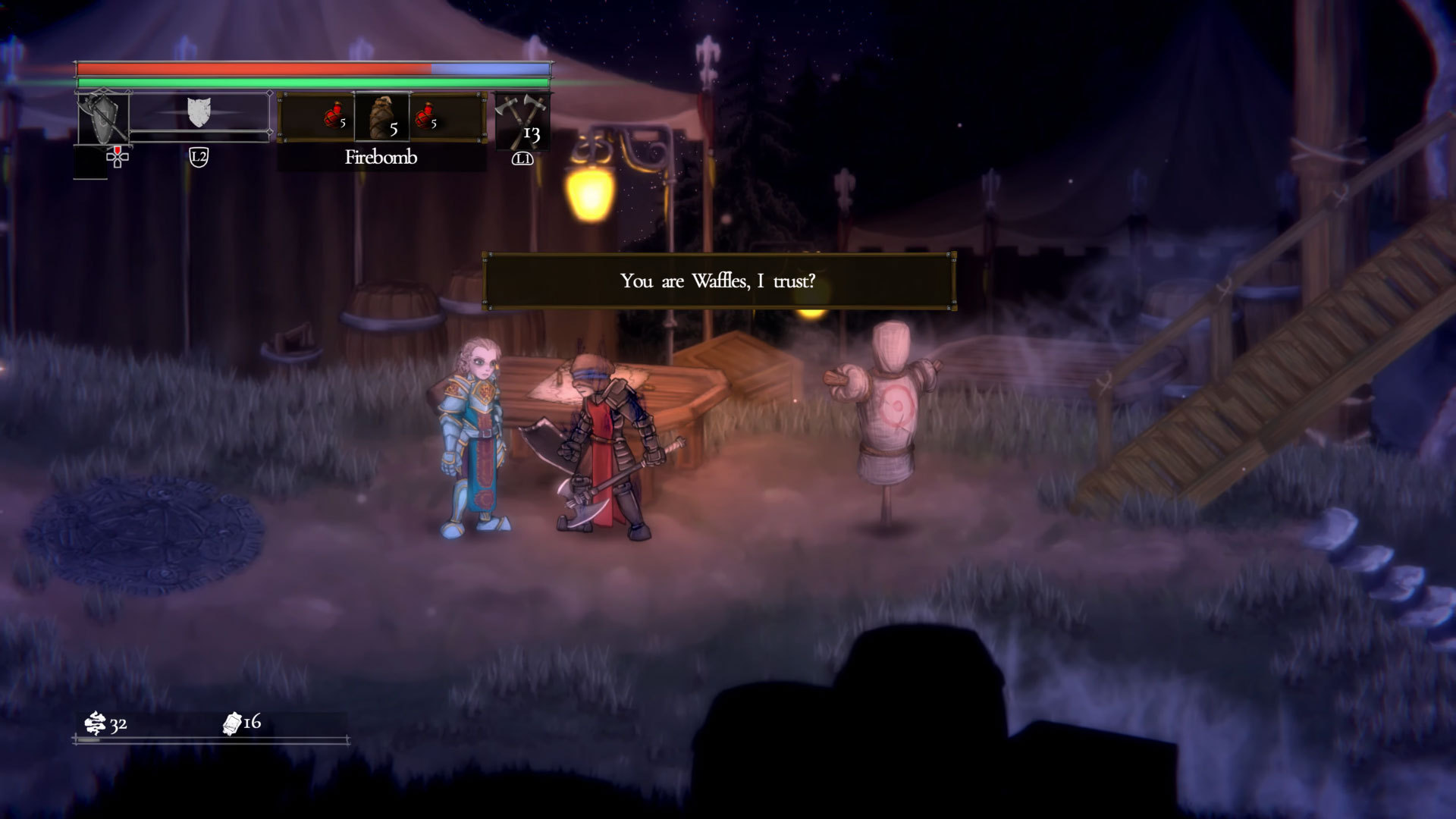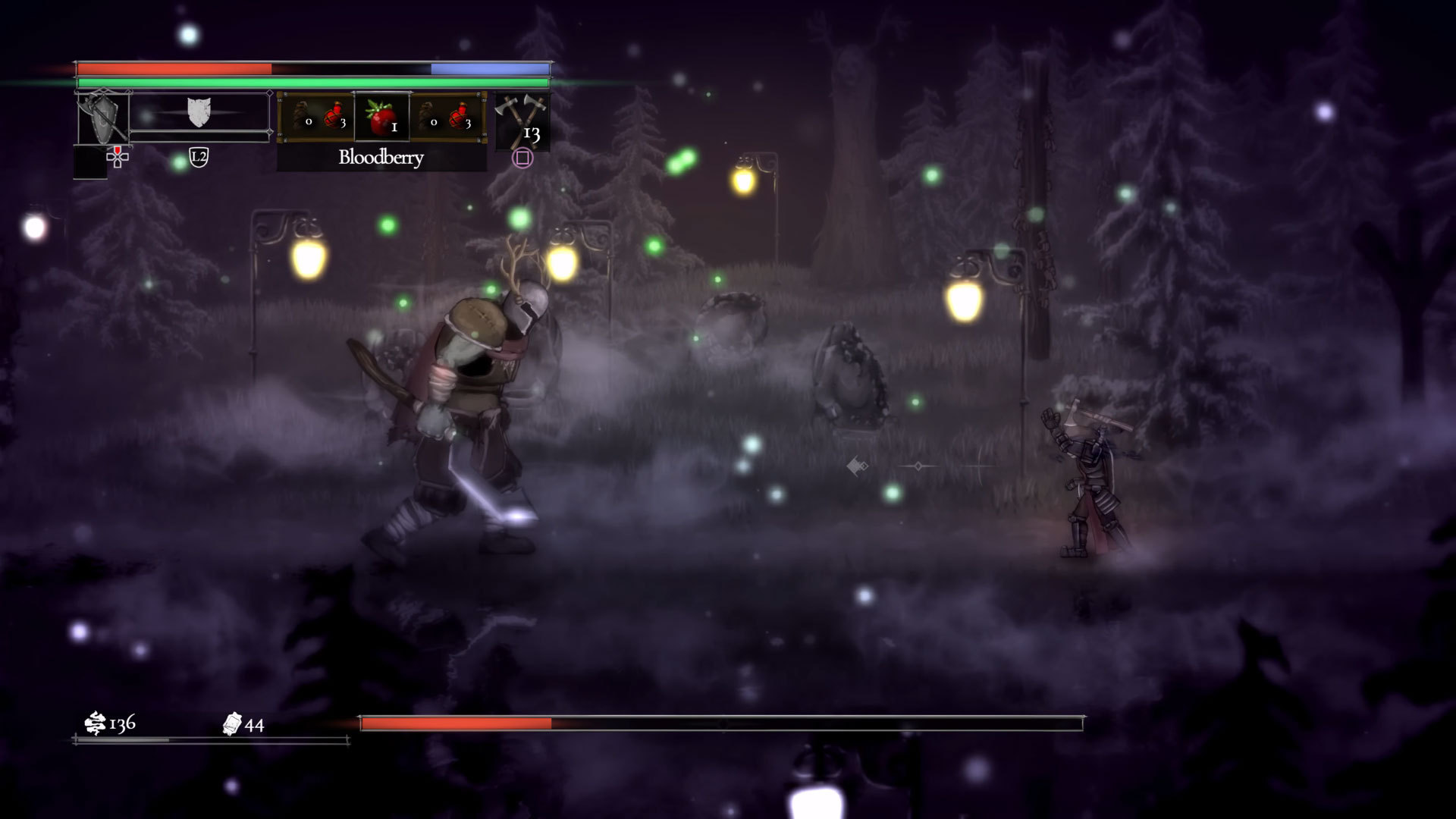Salt and Sacrifice PlayStation 5 Review
Salt and Sacrifice falls short of its predecessor in terms of entertainment value, in part owing to dubious design choices and in part due to the passage of time.
Reviewed by Rayan on May 19, 2022
As far as indie surprises go, Salt and Sanctuary rank as one of the best. This game is one of the best examples that took FromSoftware's Souls concept into a two-dimension, producing an experience that we liked from beginning to end for the originality of its offering in full 2016 and its undoubted quality. Indie games like Salt & Sanctuary, Vigil: The Longest Night, and Blasphemous, which have a platforming and fight pillar system, as well as RPG power-ups and narration in common, are the pervasive danger and the heavy, gloomy mood, which are a hallmark of the indie scene. In Salt and Sacrifice, Ska Studio makes its comeback after six years with a sequel that is far less compelling despite its attempts to include new components that distinguish it from its predecessor. Sadly, from the very beginning, however, Salt and Sacrifice seems to be a game that has seen better days.

Salt and Sacrifice is more of a symbolic descendant to Salt and Sanctuary than a true sequel, taking up numerous elements from the original but adding many more and adjusting the previous game. Despite its outward look, the game contains entirely new content while maintaining a visual connection to the last game. As far as gameplay goes, the makers of Salt and Sacrifice have concentrated on improving the multiplayer possibilities of the videogame, which in Salt and Sanctuary was restricted to a minimal capability.
The game puts the player as an Inquisitor who must track down and punish Mages for paying for their crimes. The game begins with a similar editor to the one used in the first volume of the series. Class selection will allow starting with some great classics like a warrior, assassin, or priest. Though as we progress in the game and obtain more skills and knowledge, the possibilities for our character's path will open up dramatically. To save his life, our character must go through a perilous ritual that will turn him into an Inquisitor, a powerful character who can rise from the dead but is bound, on the prowl for wizards, terrifying characters who can manipulate the elements and who, with their help, demolish the kingdom of Altarstone, the setting for the narrative. As you may have guessed, this ritual has a very low probability of success, but thanks to our character, it will be a success, promoting him to the rank of Inquisitor. Once again, the game's story isn't its primary emphasis as the players only need a basic understanding of who they are and what motivates them to follow the route they have chosen.

The story does not go very far beyond this concept, at least not until the last few minutes, when a succession of non-playable characters explains to us what the background of the game is in more explanation, including the history of the wizards. Earlier on in the adventure, a few words provide suggestions regarding the forces that are now active in the field; however, these signals are spread out over the narrative. The majority of the time, the story of Sacrifice is even less fleshed out and open to interpretation than that in Sanctuary. Besides, the narrative won't matter much as the majority of the time, the goal is to go to different locations and kill everything that moves.
Salt and Sacrifice is a role-playing game, at least in terms of its gaming mechanics and some of the plot choices. Once again, we'll be immersed in a 2D souls-like game with many of the genre's prominent features. We create and personalize our character's appearance, level up and upgrade skills and specialize in different sorts of weapons, etc. Players are given complete control over the development of their character, including the ability to choose what skills they want to hone as they go through the game's levels, bosses to face, and deaths that wipe out all of the experience they've accumulated and force them to go back and try again.
Salt and Sanctuary's appeal comes from its challenging gameplay and quests that let you learn more about the area and the people who live there. When we're engaged in combat, we're limited by our ability to move because of our resistance bar. This means we can't just keep dodging or blocking, or attacking. The game also has a moderately challenging difficulty setting, control points where you may rest and refill potions in trade for enemies respawning. We create and personalize our character's appearance, level up and upgrade skills, etc. In addition to that, there is Multiplayer such as local couch co-op, online cooperative play, and PvP battles. Participating in PvP awards players unique tokens that may be traded in for unique gear by speaking to a certain NPC. Due to the inclusion of the Co-Op mode, two players can work together to take on formidable mages.

This game offers simple gameplay like other Soulsborne games, but each weapon has its special move and physical damage and defenses to take into account. However, because you're simply traveling along the 2D plane, it's easier to avoid attacks than in a 3D environment. When fighting bosses and larger enemies, I felt like my character was being torn about like a toy doll and wouldn't hold onto ledges when I was platforming. Salt & Sacrifice has a looseness that isn't ideal when a 30-foot-tall enemy is hammering a giant sword at your face. Combos that alternate between heavy and light strikes for each weapon archetype give combat a boost. The innate drive to participate in battle was made more addictive by experimenting and laying up suitable volleys of assaults for each enemy type. Each weapon also has unique functionality, such as powerful bonuses that may be triggered by hitting enough hits to spice things up a little.
My favorite aspect of the game's leveling system was that there were no restrictions on how much XP a player could put into "levels" in return for points in a wide variety of skill trees. This will raise the character's statistical values and his ability to carry weapons and different armors of successively superior; each weapon also has a sequence of special strikes, a proper combo between heavy and light impacts. Inquisitor's skill points can also be reassigned at no extra cost, allowing us to experiment with alternative builds and approaches to the game's difficulty. Each weapon has distinct abilities, with the boss weapons having unique and fairly powerful skills. There are no complicated refunds, and each piece of gear specifies what node is required to equip it in detail.

The Mage Hunts is the most exciting part of Salt and Sacrifice. It's still necessary to have bosses to progress like any Metroidvania or Souls-like games. On the other hand, Mage Hunts keep things interesting, at least on the surface level. Following a puff of smoke will lead to a Mage boss you're looking for while searching. It will teleport away after a brief period or after it has taken enough damage. Eventually, when you come to a certain place, you'll enter an isolated area where you'll fight the boss. While exploring each area, you'll run across further difficulties in the form of inaccessible locations. Locked doors in the most unexpected locations need the eradication of a certain number of Magi to unlock. As a bonus, each section provides the player with a unique item that helps create the Metroidvania level. After I first discovered the Grappling Hook, it immediately expanded my range of possible cruise destinations, making it the most memorable.
The lack of site mapping impacts the game when it involves an exploration pattern like this one, in which returning to the exact location several times is a vital feature of the game. It is relatively challenging to recall the door to the first location, even after multiple repeats, or that you had located some inaccessible areas having just grabbed up a new item. This is especially the case if the door was in a previously inaccessible location. Backtracking is taken for granted by players who wish to explore more of the game world. This is especially the case considering that the transition from the hub to a location always begins from the beginning, irrespective of how many checkpoints we have unlocked meanwhile.

Splitting your game into smaller areas, as Salt and Sacrifice does, isn't always bad, but there are drawbacks to consider. The game's Metroidvania themes are noticeably absent, and it makes up for this by imposing arbitrary advancement restrictions on the player. Throughout the game, you'll encounter hunts that offer you a named or unnamed wizard to chase down and defeat—and you'll eat their heart when you succeed. Additionally, it can open up red-lit doors and supply the raw materials needed to make some amazing stuff. As a result of the door mechanism, the game's advancement is random and feels disconnected. Salt and Sacrifice cannot accomplish this since its environments are so much smaller than those seen in Metroidvania games, known for their ability to facilitate retracing. If you don't know precisely where to obtain their quest information, you'll find yourself continuously running into doors that require more of these mage hearts.
The game's enemies are similarly diverse, each having their distinct personalities and abilities. Despite this, there aren't any very challenging enemies until far later in the game. Salt and Sacrifice offers players time to grasp its basics before tossing more formidable enemies at them. However, in this instance, the difficulty curve should have been tweaked a little to avoid it from becoming too dull early on. In contrast to the complexity of the game's bosses and wizards, the game's enemies are easy to defeat. Bosses and mages in Salt and Sacrifice can only be located in certain venues across the game's universe, and you must hunt them down by tracing their path via various areas. Regular bosses aren't often easy to spot since they don't have distinctive markings like a fog door.
While this might be confusing at times, the boss encounters themselves and includes various strategies and tactics. For boss fights, when walls of fog protect us from being tossed to our deaths, we risk being trapped in an opponent combo with no way out. Another issue is that our enemies have a significant edge in that they can rapidly respond to our every action. Close and long-range assaults are expected; however, most don't provide the user a single second of healing time. There is no respite for the monster, and since he can attack us from wherever, it's clear that the odds are stacked against us. Boss fights are tiresome after a while, but the backtracking in a game without a map may reward players who are willing to dig a bit deeper for the material, elements that work well in cooperative settings.

Salt and Sacrifice has made a significant leap forward in quality. Even if you don't like the aesthetic, you can't deny how much attention went into each animation and the concept of each character. Everything has been redesigned, and no old elements have been recycled into new ones. Only at times did the surroundings seem uninspired and possibly too generic, with gloomy tones that made the diverse regions resemble one other. However, the game has far more detailed, impressive backgrounds and more polished characters. It's also important to note that the game's audio has appropriate music and a wide variety of instantly identifiable sounds that serve to amplify the power conveyed by our strikes and punches.
Even though Salt and Sacrifice is a good game, many adjustments have been made that take away from the game's unique character while favoring more formulaic gameplay. It's a game that, in general, is enjoyable and entertaining. Still, its accomplishments are weighed down by several innovations that stay instead of contributing, giving the feeling that it has gone a step backward. The game falls short of its predecessor in terms of entertainment value, partly due to dubious design choices and partly due to the passage of time and technological advancements. If you're searching for a decent couch co-op experience, then Salt and Sacrifice is rewardingly entertaining.
Azfar Rayan (@AzfarRayan)
Editor, NoobFeed
Senior Editor, NoobFeed
Verdict
60
Related News
No Data.

